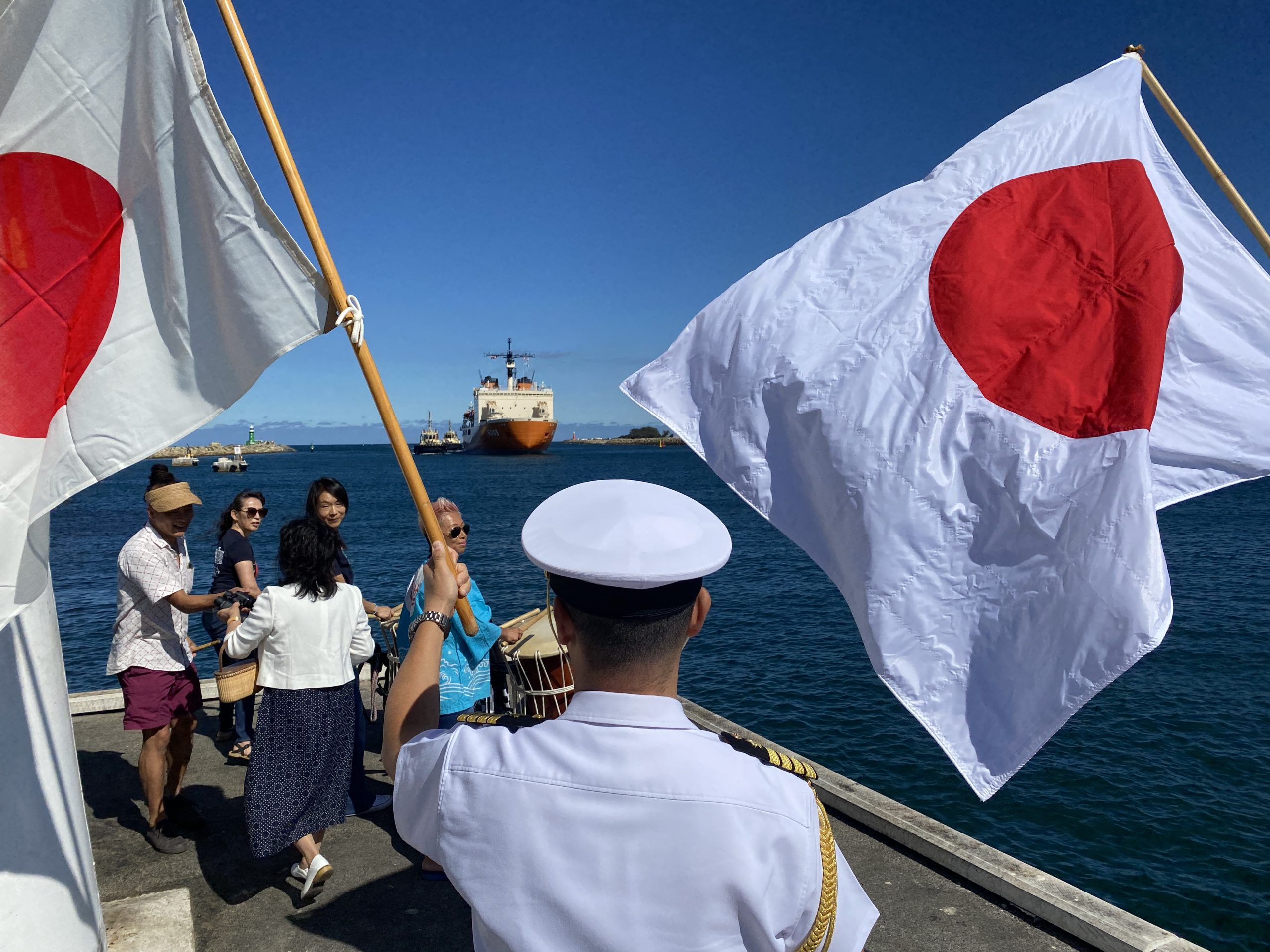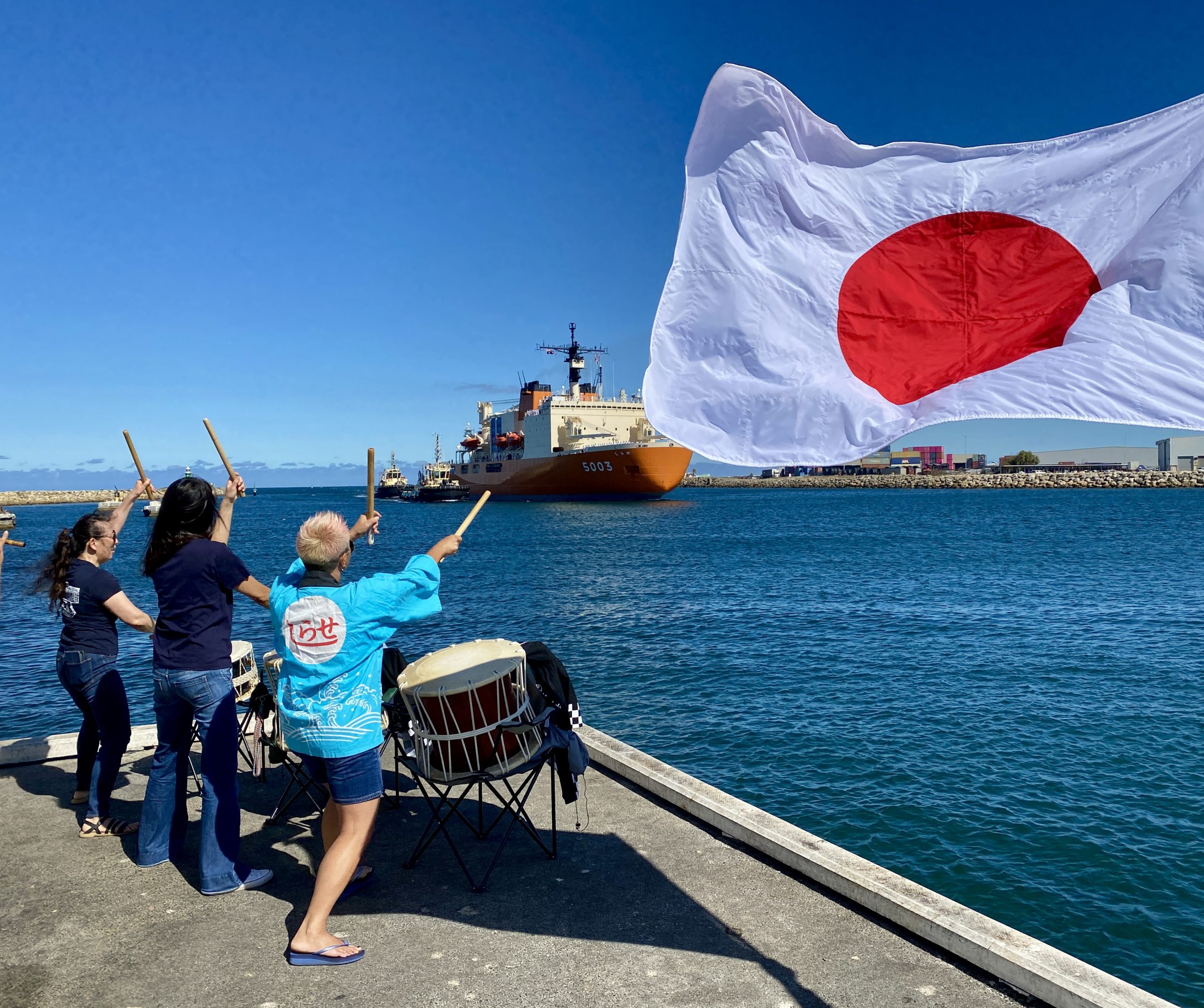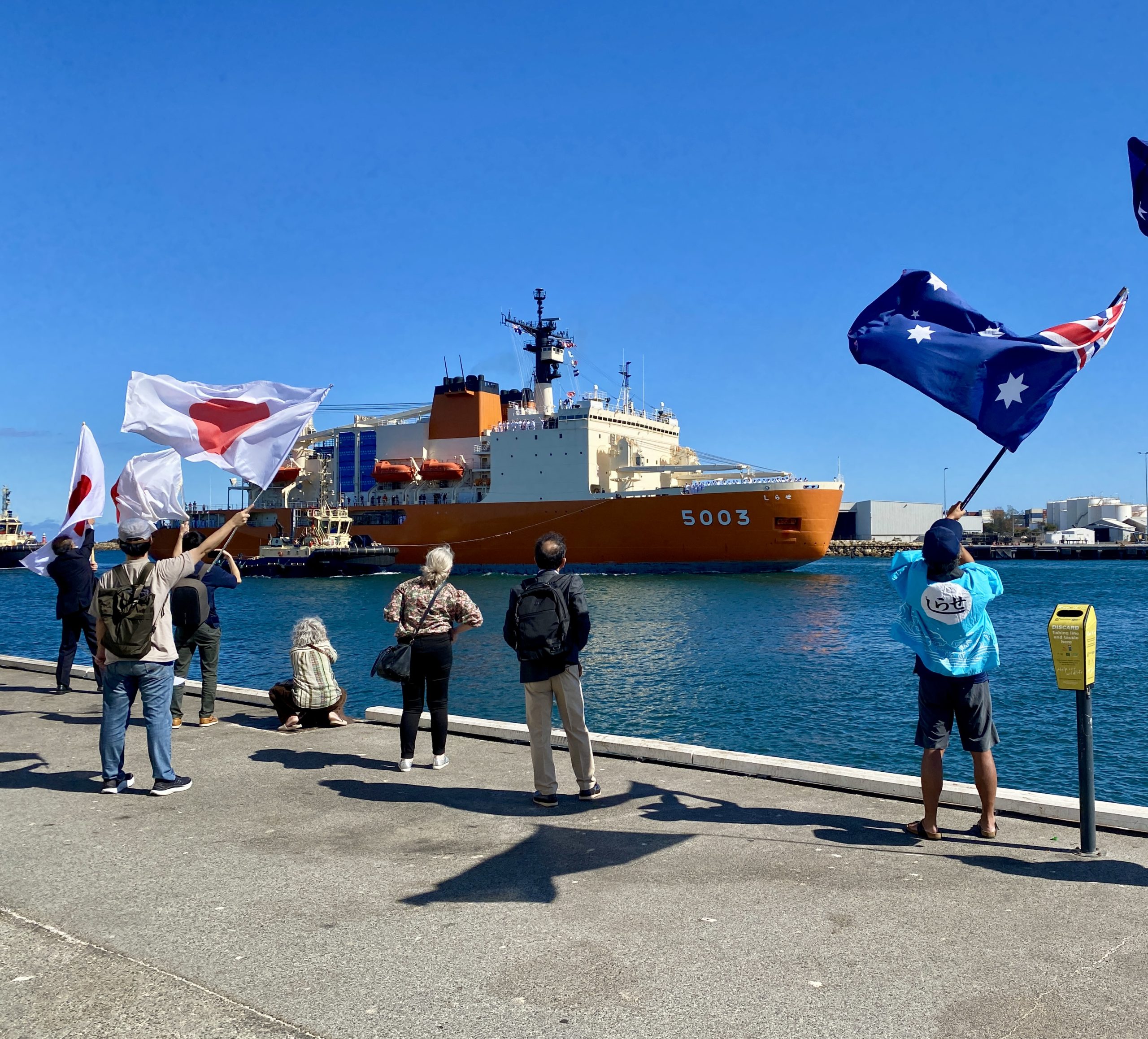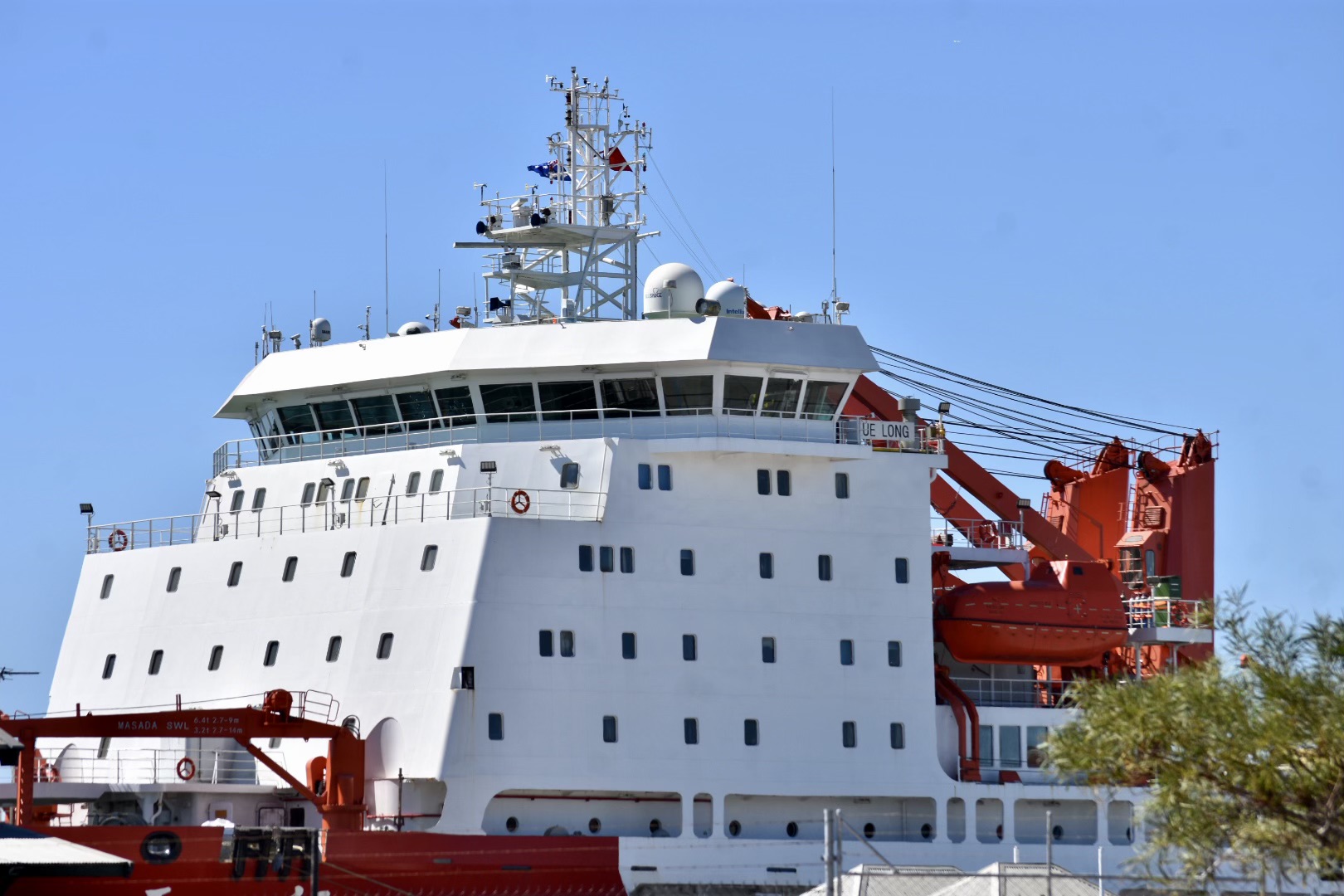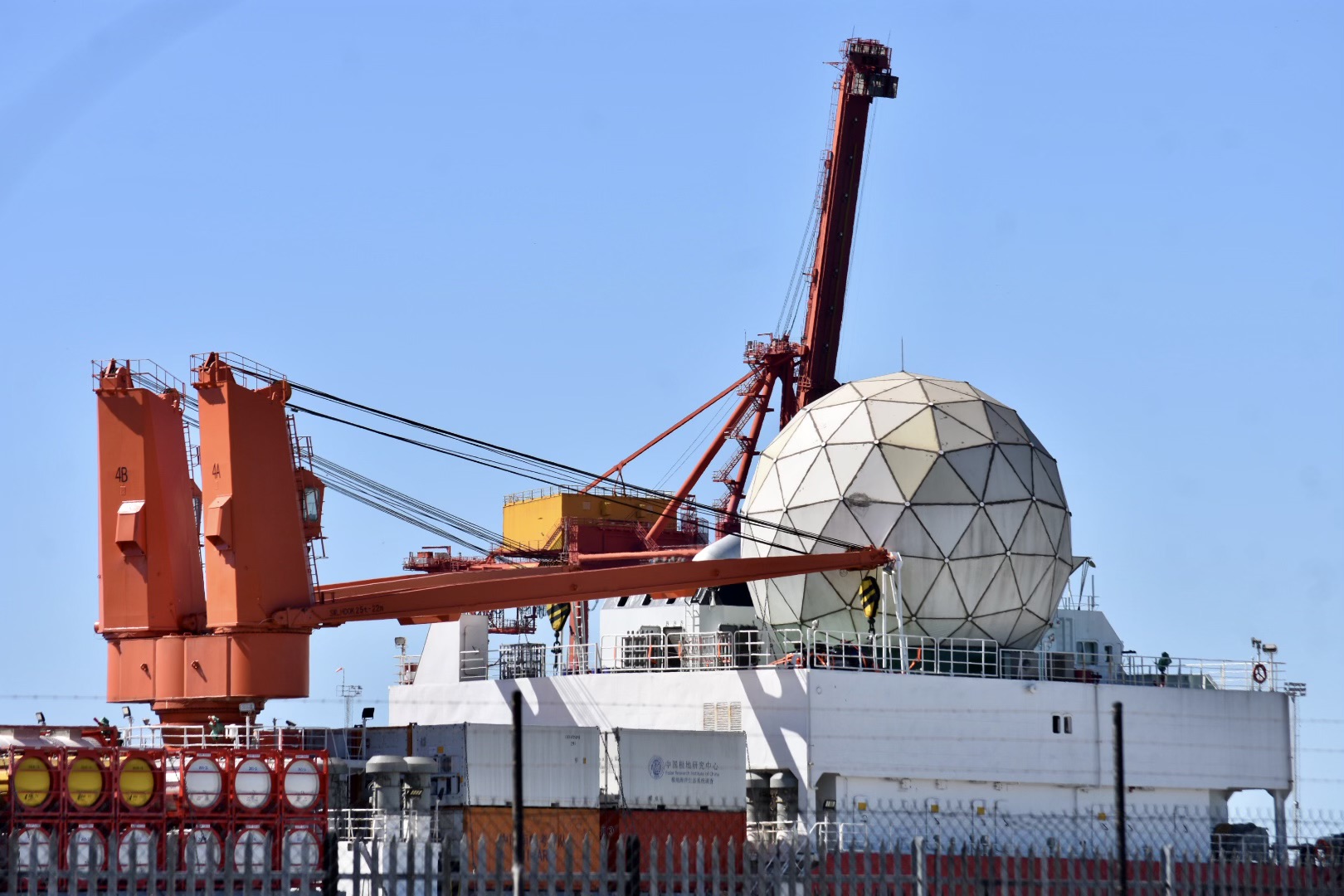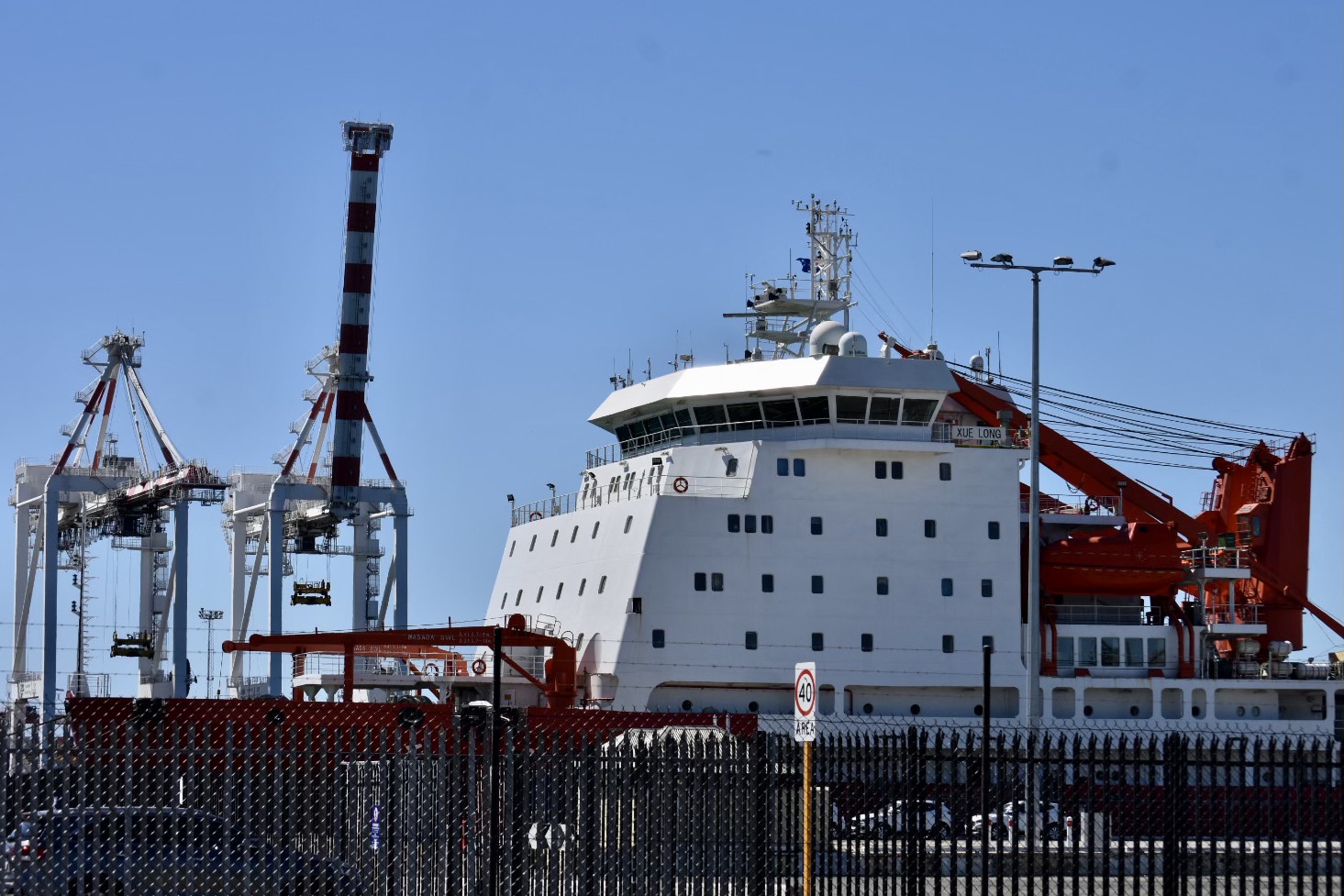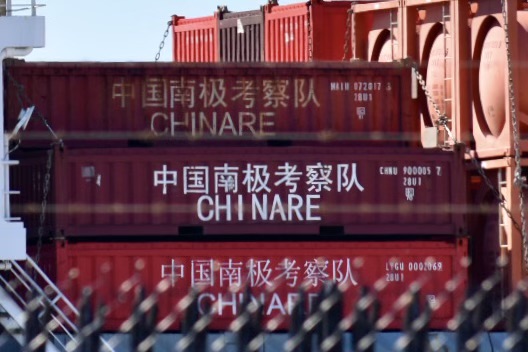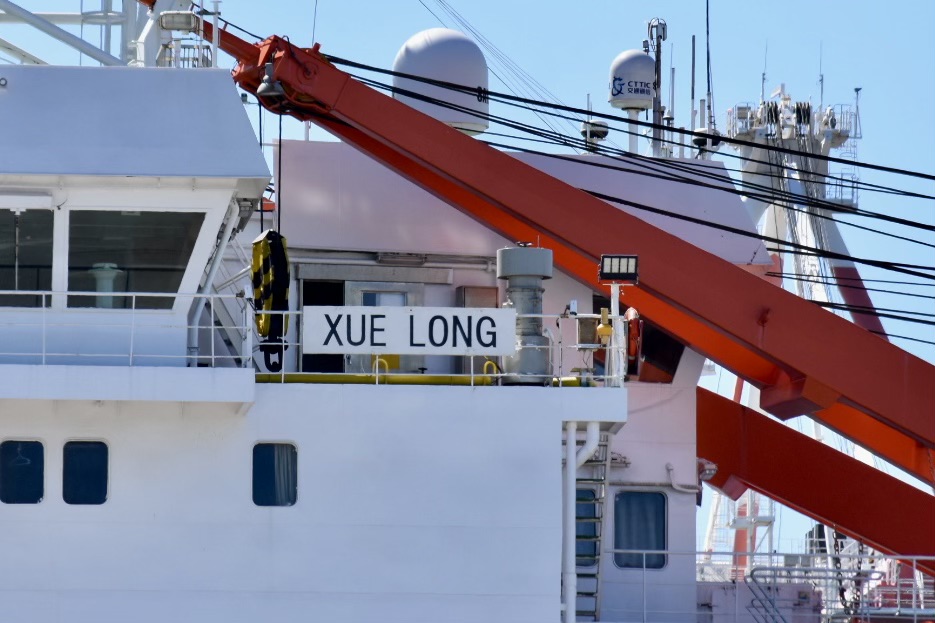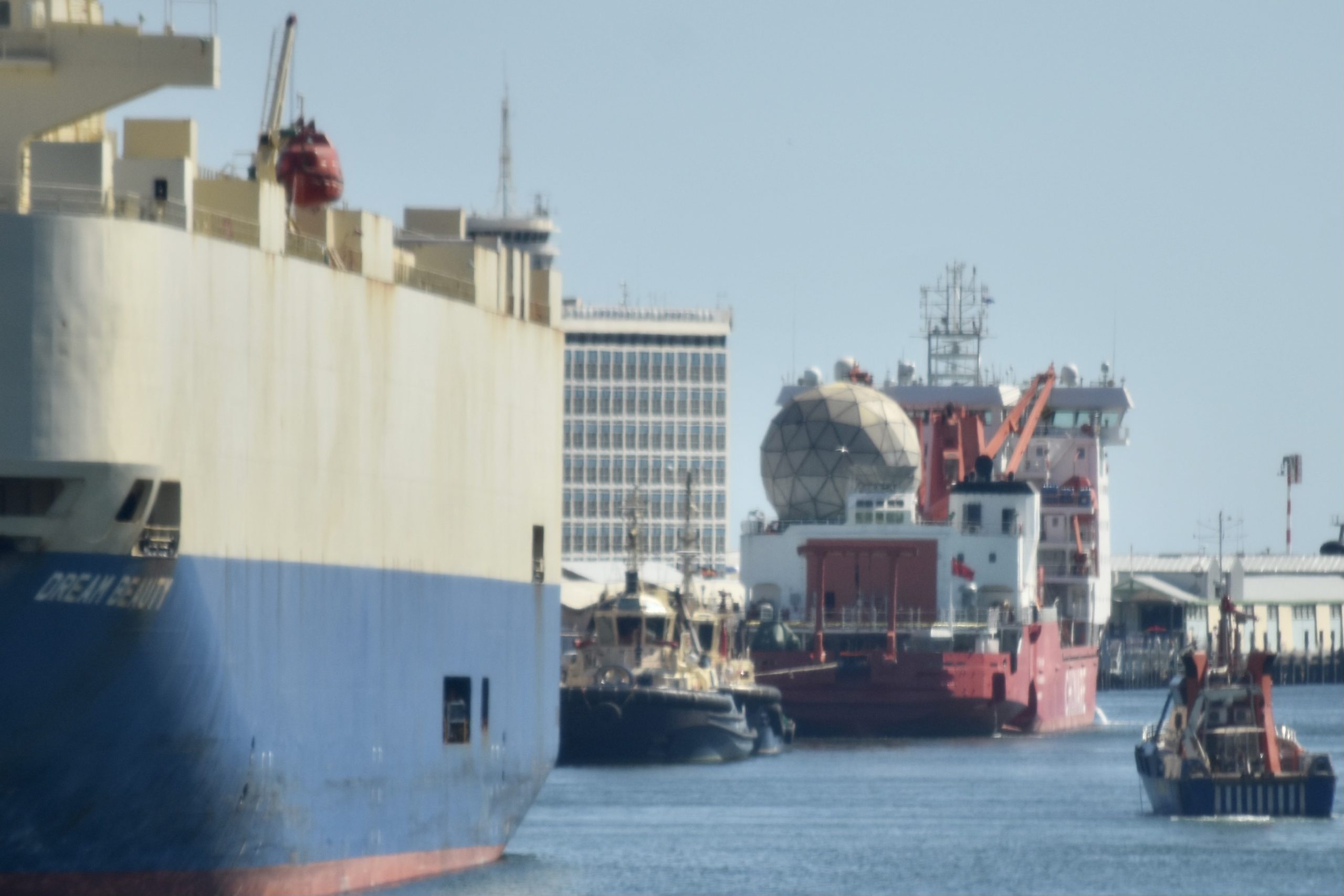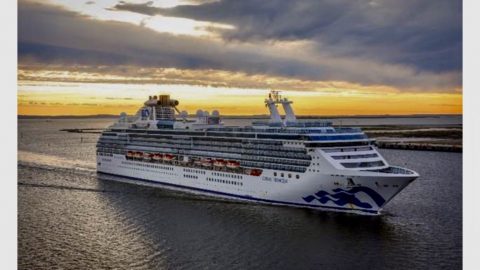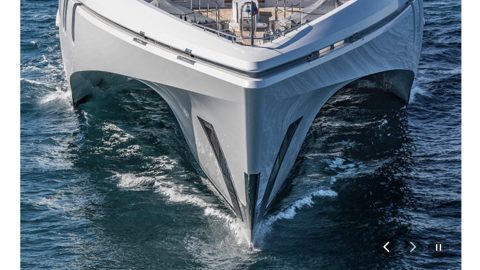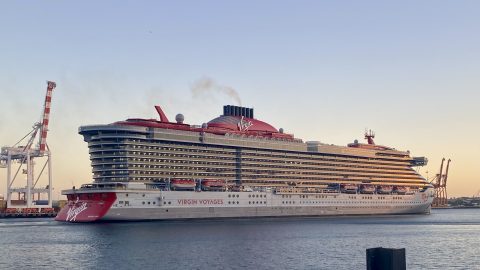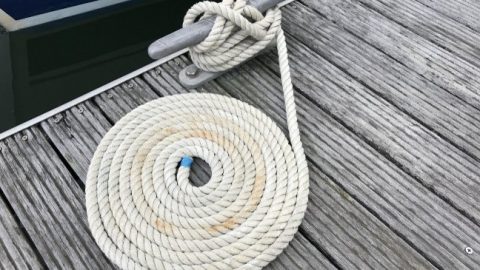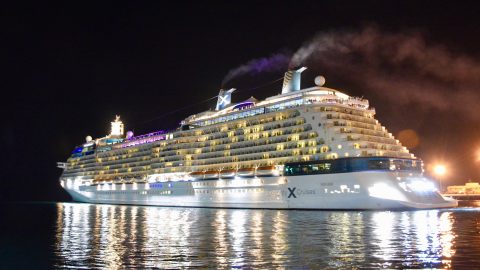Icebreakers are common visitors to Fremantle. In recent months we have had Icebreakers from both China and Japan in port. Australia has an icebreaker ship too, RSV Nuyina, but she hasn’t visited us yet.
For a ship to be considered an Icebreaker, she should have three features most ships lack: the power to push through thick ice; a strengthened hull; and an ice clearing shape. That enables icebreakers to plow through pack ice or frozen waterways.
SHIRASE
The orange Japanese Icebreaker Shirase arrived in Fremantle yesterday after several months in Antarctica. She was welcomed at Victoria Quay by a large crowd, including Japanese dignitaries, traditional Japanese drummers and people waving Japanese and Australian flags. She visited twice in 2023 – in March and November and before that every year since 2017 apart from the Covid years 2020 and 2021.
Shirase is named after the Shirase Glacier. Shirase Glacier (Japanese: 白瀬氷河; Shirase Hyōga) is a large glacier entering Havsbotn, the bay that forms the head of Lutzow-Holm Bay in Antarctica. This glacier bears the family name of Lieutenant Nobu Shirase, a Japanese pioneer in Antarctic exploration.
The vessel is operated by the Japan Maritime Self-Defense Force – or Navy – and is Japan’s fourth icebreaker for Antarctic expeditions.
The Shipping News has featured her arrivals in November 2017, 2018, 2019, 2022 and March & November 2023. Here’s our November 2022 article giving the lowdown on her!
Because she is a Maritime Self-Defence Force ship, she doesn’t show up on Fremantle Port’s ‘Voyager’system, which lists Ship’s arrival and departure times. But you will find her on ship tracking apps where she is described as a ‘Military Ops’ vessel sailing under the flag of Japan.
Her visits are always exciting – her bright orange hull is a perfect backdrop for her crew who dress in impeccable white. They line up on the bow for arrival and departure, as you can see in the pics of her arrival yesterday.
Shirase is due to depart Freo for Japan in a couple of days.
As South Mole is currently closed, Victoria Quay would be the best vantage point to see her and to wave her farewell.
XUE LONG
Xue Long is one of China’s three icebreakers.
She last visited Fremantle on 15 November 2023, after a fourteen-day voyage from Shanghai, People’s Republic of China.
Here are some of the pics I took of her that hot Freo day!
She is described as a Research/Survey vessel on ship tracking apps, sailing under the flag of China.
This icebreaker is bright Mao-red with CHINARE written on the hull.
In Chinese, Xue Long means Snow Dragon.
She was built at the Kherson Shipyard in Ukraine 30 years ago and began life as an icebreaking cargo and supply ship designed for the Russian Arctic. The People’s Republic of China purchased her and converted her into a polar research and re-supply vessel in 1994. In 2007, the ship was extensively upgraded to extend her service life by another 15 years. During the mid-life refit, the ship received a new superstructure that considerably changed her external appearance.
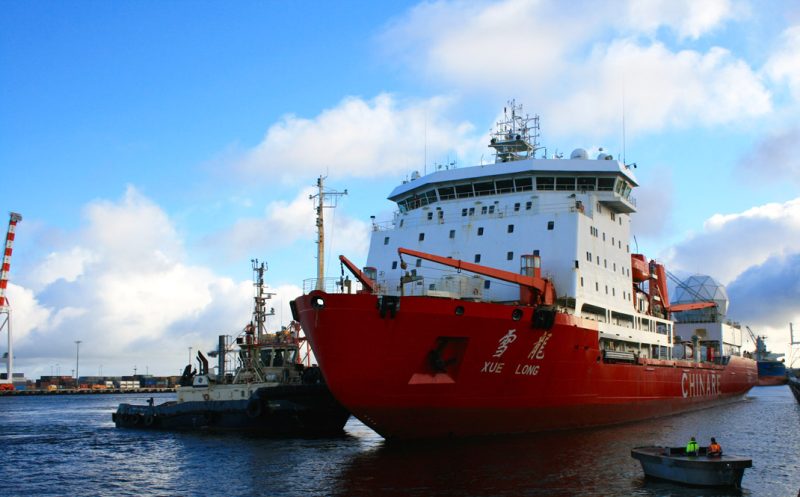
File photo Fremantle Shipping News
The giant golf-ball structure on her deck is a geodesic dome or a Radome. Radome is a portmanteau of the words ‘radar’ and ‘dome’. The dome houses mechanical radar dishes and satellite equipment, protecting it from the weather. Radomes look rigid, but are actually made from several layers of heavy-duty canvas and resin. The outer layer is hydrophobic with anti-UV damage coating and held up by air-pressure.
Xue Long is 167m long and has a beam of 23m. She carries a crew of 34 and can accommodate 128 passengers or researchers. In open water, Xue Long can achieve a maximum speed of 18 knots and when in 1.1-metres of ice, she can make 1.5 knots.
On board are 100 square metres of laboratory space, a helicopter called ‘Snow Eagle’ and an Arctic-Class ARV autonomous underwater vehicle. Although primarily used to support Chinese expeditions to Antarctica, the Snow Dragon has also completed five Arctic Voyages and almost reached the North Pole. She provides annual resupply for China’s Antarctic Station at Prydz Bay.
In January 2019, she struck an iceberg during a sea fog whiteout in the Amundsen Sea and sustained damage to the foredeck and mast.
Xue Long has visited Fremantle several times in recent years: once following the Akademik Shokalskiy rescue operation in 2014, when the Akademik Shokalskiy became trapped in ice in Antarctica. In the same year, she joined the multinational search operation for Malaysia Airlines Flight 370 that disappeared approximately 2,500 km southwest of Fremantle, in the Indian Ocean.
Xue Long arrived in Hobart yesterday having travelled from Zhongshan in China. No doubt she’s in her way to Antarctica again.
RSV NUYINA
RSV Nuyina is Australia’s $528m Antarctic icebreaking research and supply vessel intended to support Australian scientific activities in the Southern Ocean. She is the main lifeline to Australia’s three Antarctic bases.

She is a Polar Class 3 icebreaker capable of deploying a wide range of vehicles, including helicopters, landing barges and amphibious trucks to support the resupply operation.
Nuyina, pronounced noy-yee-nah, means ‘southern lights’ in palawa kani, the language of Tasmanian Aborigines. The vessel is capable of crossing thousands of kilometres of the world’s stormiest seas and navigate through Antarctica’s sea ice barrier. Her crew lives and works for extended periods on the coldest, driest and windiest continent on earth – Antarctica – in some of the harshest conditions in the world.
RSV Nuyina has been in the news recently, after being barred from passing under the Hobart Tasman Bridge. She is significantly wider than initially designed and lacks the turning ability to safely pass underneath the bridge and refuel on the other side. She normally berths at Hobart’s Macquarie Wharf, to the south of the Tasman Bridge.
In 1975, twelve people died when a cargo ship crashed into the same bridge, causing part of it to collapse. So, the 160-metre icebreaker must now sail hundreds of kilometres to refuel, costing an extra $875,000 in fuel coats and generating more emissions this season.
A plan, that the Australian Antarctic division could shift shipping operations to Fremantle has been floated. RSV Nuyina was anchored off Rottnest Island last year, but didn’t come into Fremantle. Perhaps she was getting the feel of the place!
I’m told we may see her in a few years time when on her way to Singapore for refurbishment.
We will let you know when it’s happening.
STORY by Jean Hudson @jeansodyssey. Jean is our Shipping Correspondent and also a regular feature writer and photographer here on the Shipping News. You may like to follow up her informative Places I Love stories, as well as other feature stories and Freo Today photographs, right here.
~~~~~~~~~~~~~~~~~~~~~~~~~~~~~~~~~~~~
* If you’d like to COMMENT on this or any of our stories, don’t hesitate to email our Editor.
** WHILE YOU’RE HERE –
PLEASE HELP US TO GROW FREMANTLE SHIPPING NEWS
FSN is a reader-supported, volunteer-assisted online magazine all about Fremantle. Thanks for helping to keep FSN keeping on!
*** And don’t forget to SUBSCRIBE to receive your free copy of The Weekly Edition of the Shipping News each Friday!
